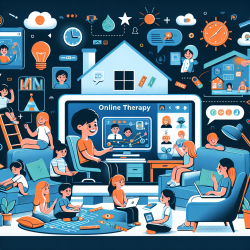Introduction to Virtual Therapy in Occupational Therapy
The advent of virtual therapy, particularly telepractice, has significantly transformed the landscape of occupational therapy for children. This blog aims to delve into the efficacy of virtual therapy, backed by data-driven insights, to inform occupational therapists about the potential benefits and challenges of integrating these services into their practice.
Understanding the Need for Virtual Therapy
In recent years, the demand for flexible and accessible therapeutic interventions has increased, especially within school settings. Online therapy services, such as those provided by TinyEYE, have emerged as a viable solution to meet these needs. But what does the data say about its effectiveness?
Data-Driven Insights on Telepractice
Research indicates that telepractice can be as effective as in-person therapy for many children. A study published in the "Journal of Telemedicine and Telecare" found that children receiving virtual occupational therapy showed significant improvements in their functional skills, comparable to those receiving traditional face-to-face therapy.
Furthermore, a survey conducted among schools utilizing telepractice services reported high levels of satisfaction, with 85% of respondents noting improvements in student engagement and outcomes. This data underscores the potential of virtual therapy to not only maintain but enhance the quality of occupational therapy services provided to children.
Benefits of Virtual Therapy
- Accessibility: Virtual therapy breaks down geographical barriers, allowing children in remote or underserved areas to access high-quality therapy services.
- Flexibility: Scheduling is often more flexible, accommodating the busy timetables of schools and families.
- Engagement: Interactive digital tools can increase children's engagement and motivation during therapy sessions.
Challenges and Considerations
Despite its advantages, virtual therapy is not without challenges. Technical issues such as connectivity problems can hinder the delivery of services. Additionally, therapists must be adept at using digital platforms and adapting their strategies to a virtual environment.
Moreover, not all therapeutic activities are easily transferable to a virtual setting. It is crucial for therapists to continuously assess and tailor their approaches to each child's unique needs and circumstances.
Conclusion
Virtual therapy represents a promising avenue for occupational therapy, particularly in educational settings. By leveraging data-driven insights, occupational therapists can make informed decisions about integrating telepractice into their services, ultimately enhancing outcomes for children. As the field continues to evolve, ongoing research and adaptation will be key to maximizing the potential of virtual therapy.










